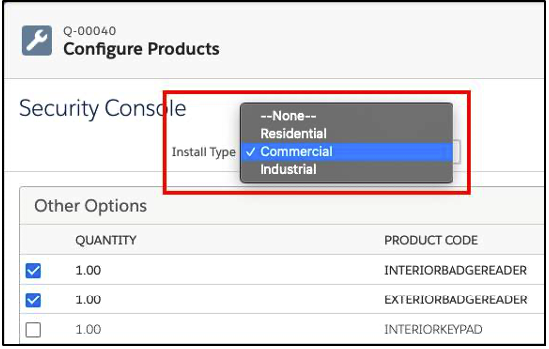In this blog series, we will be discussing some of the core CPQ attributes that can impact your team’s quoting process. And in a subsequent series, I will go in-depth about how to configure these attributes to customize the quoting process to better fit your company’s requirements. In this specific blog, I will discuss what Configuration Attributes and Global Attributes in Salesforce CPQ are. Additionally, I will also discuss how you can leverage attributes to provide a better experience for your team.
Configuration attributes are picklists that live on the Quote Line Editor in Salesforce CPQ. One thing to discern when talking about attributes and CPQ is that there are both Configuration Attributes and Global Attributes. First, we will discuss when to use a Configuration Attribute vs a Global Attribute.
Configuration Attribute vs. Global Attribute
When to use a Configuration Attribute:
- You need to have a default value for the Attribute
- The Attribute is associated with a specific bundle as opposed to all products and bundles
- You want visibility into the Attribute at the top of the Quote Line Editor
When to use a Global Attribute:
- You do not need to have default values
- The Attribute applies to multiple bundles (global)
- The placement of the Attribute in the Product Drawer meets the requirements
When using a Configuration Attribute, remember that these are specific to a bundle. Below in the screenshot, there are 3 unique install types, and you would select just one of them. The options for the Install Type Configuration Attribute are Residential, Commercial, and Industrial. Depending on the logic built into the Configuration Attribute, selecting the Industry Type could drive things such as price, allowable discount and many other key attributes.

As you can see, with Configuration Attributes there are a lot of ways to control what is displayed and how it is displayed in the Quote Line Editor. To take it a step further you can also set up dependent picklists within the Configuration Attribute set so that if a value from Configuration Attribute A is chosen, only specific values in Configuration Attribute B will display. In a future blog, we will walk through how to set up Configuration Attributes in your instance of Salesforce.
For additional information on CPQ and CPQ settings, check out some of my related blogs below!
Additional Resources
- Salesforce Help: Configuration Attribute Guidelines
- Salesforce Help: Global Attributes
- Trailhead by Salesforce: Personalize Smartwatches with Salesforce CPQ Attributes
- Salesforce CPQ Bundles
- Salesforce CPQ Product Features
Cover Photo by Jean-Philippe Delberghe on Unsplash




